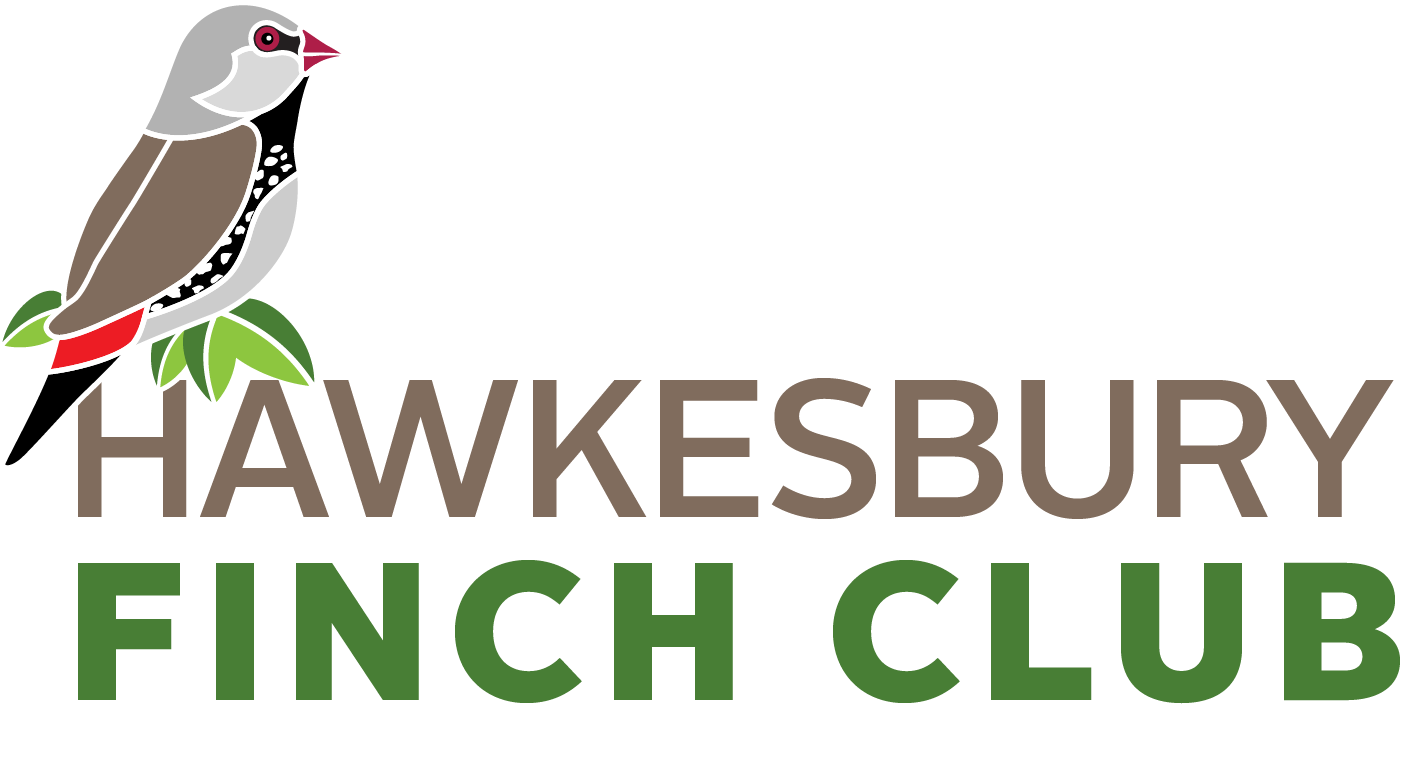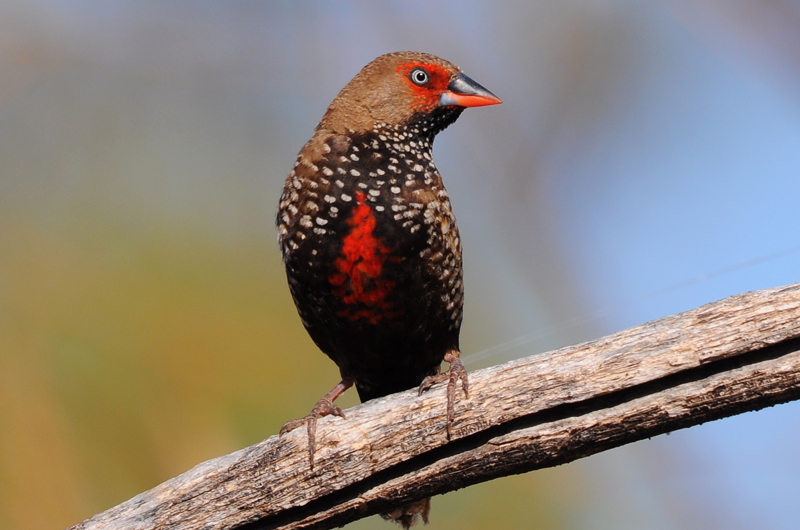Painted Firetail Finch. Photo: Mark Helle
Article kindly provided by Geoff Robards
Being more than a little interested in finches, and having always concentrated on breeding Australian finches, I was delighted to see Painted Firetail Finches (Emblema pictum) in the Alice Springs Desert Park during a recent visit to the Northern Territory.
The 1300 hectares (3250 acres) of the Desert Park is a blend of wildlife park and botanic gardens. There are about 400 different plants (about 350 species), ranging from small grasses and compositae to large Eucalyptus trees, all of which are endemic to the semi-arid environment of central Australia. There are also about 75 different birds and 75 mammals, insects and reptiles. The core area of 50 hectares (125 acres) has a 3 km network of paths that allow visitors access to all the main exhibits over three semi-arid habitats: sand country, desert rivers, and woodland. Incidentally, for those interested in Australian semi-arid flora, the Olive Pink Botanic garden (also on the outskirts of Alice Springs) is worth a visit. The OPBG covers 16 hectares (40 acres) and has self-guided walks through several semi-arid habitats with a good range of plants clearly labelled.
At the Desert Park there are five large aviaries, each of which can be viewed through glass panels (excellent for ensuring the public don’t disturb or feed the birds!), and one very large walk-through aviary. One aviary is located in the woodland habitat, two in the sand country, and three (including the walk-through) in the desert rivers habitat.
For me, the highlight was seeing Painted finches in several of the aviaries. One aviary in particular contained a real charm of these delightful birds and it was there that I obtained the accompanying photos of a male leaving his nest in the top of a large spinifex tussock (Triodia spp).
Painted Firetail Finch leaving nest. Photo: Geoff Robards
And later sitting on a branch in surroundings truly representative of his natural habitat. Among the other small birds there were – various robins, including some striking red-capped Robins (Petroica goodenovii); chats, including crimson chats (Epthianura tricolour); wrens and Zebra finches (Taeniopygia guttata castanotis).
“For me, the highlight was seeing Painted finches in several of the aviaries.”
Painted Firetail Finch sitting on a branch. Photo: Geoff Robards




